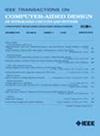分布偏移下随机网络物理系统的统计可达性分析
IF 2.7
3区 计算机科学
Q2 COMPUTER SCIENCE, HARDWARE & ARCHITECTURE
IEEE Transactions on Computer-Aided Design of Integrated Circuits and Systems
Pub Date : 2024-11-06
DOI:10.1109/TCAD.2024.3438072
引用次数: 0
摘要
可达性分析是一种为随机网络物理系统(SCPS)提供安全保证的流行方法,它采用系统动态的符号描述,并使用集合传播方法计算在有界时间范围内的可达状态集合的过度近似值。在本文中,我们研究了对 SCPS 进行可达性分析的问题,这种 SCPS 没有动态的符号描述,而是使用数字孪生模型进行描述,可以通过模拟生成系统轨迹。一个重要的挑战是,模拟器对 SCPS 轨迹集的概率分布进行隐式建模;然而,典型的情况是存在模拟与实际之间的差距,即部署环境中轨迹的实际分布可能与模拟器假设的分布存在偏差。因此,我们提出了一种统计可达性分析技术,在给定用户提供的阈值 $1-\epsilon $ 的情况下,提供一个集合,保证在部署过程中任何轨迹位于该集合中的概率不小于该阈值。我们的方法基于三个主要步骤:1) 从采样轨迹中学习确定性代用模型;2) 对代用模型进行可达性分析;3) 使用额外的采样轨迹集进行稳健保形推理 (CI),以量化代用模型相对于部署 SCPS 的分布偏移。为了应对可达集的保守性,我们提出了一种训练代用模型的新方法,该方法可使量子损失项(而非通常的均方损失)最小化,还提出了一种使用归一化代用误差的 CI 新方法,该方法可提供更严格的保证。我们在各种案例研究中展示了我们技术的有效性。本文章由计算机程序翻译,如有差异,请以英文原文为准。
Statistical Reachability Analysis of Stochastic Cyber-Physical Systems Under Distribution Shift
Reachability analysis is a popular method to give safety guarantees for stochastic cyber-physical systems (SCPSs) that takes in a symbolic description of the system dynamics and uses set-propagation methods to compute an overapproximation of the set of reachable states over a bounded time horizon. In this article, we investigate the problem of performing reachability analysis for an SCPS that does not have a symbolic description of the dynamics, but instead is described using a digital twin model that can be simulated to generate system trajectories. An important challenge is that the simulator implicitly models a probability distribution over the set of trajectories of the SCPS; however, it is typical to have a sim2real gap, i.e., the actual distribution of the trajectories in a deployment setting may be shifted from the distribution assumed by the simulator. We thus propose a statistical reachability analysis technique that, given a user-provided threshold
$1-\epsilon $
, provides a set that guarantees that any trajectory during deployment lies in this set with probability not smaller than this threshold. Our method is based on three main steps: 1) learning a deterministic surrogate model from sampled trajectories; 2) conducting reachability analysis over the surrogate model; and 3) employing robust conformal inference (CI) using an additional set of sampled trajectories to quantify the surrogate model’s distribution shift with respect to the deployed SCPS. To counter conservatism in reachable sets, we propose a novel method to train surrogate models that minimizes a quantile loss term (instead of the usual mean squared loss), and a new method that provides tighter guarantees using CI using a normalized surrogate error. We demonstrate the effectiveness of our technique on various case studies.
求助全文
通过发布文献求助,成功后即可免费获取论文全文。
去求助
来源期刊
CiteScore
5.60
自引率
13.80%
发文量
500
审稿时长
7 months
期刊介绍:
The purpose of this Transactions is to publish papers of interest to individuals in the area of computer-aided design of integrated circuits and systems composed of analog, digital, mixed-signal, optical, or microwave components. The aids include methods, models, algorithms, and man-machine interfaces for system-level, physical and logical design including: planning, synthesis, partitioning, modeling, simulation, layout, verification, testing, hardware-software co-design and documentation of integrated circuit and system designs of all complexities. Design tools and techniques for evaluating and designing integrated circuits and systems for metrics such as performance, power, reliability, testability, and security are a focus.

 求助内容:
求助内容: 应助结果提醒方式:
应助结果提醒方式:


